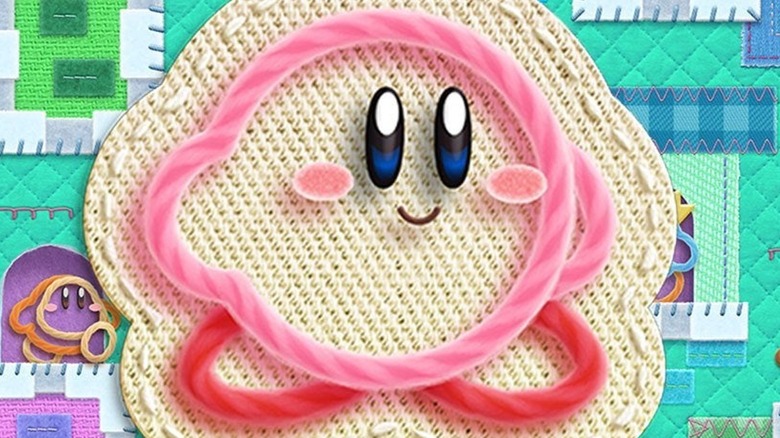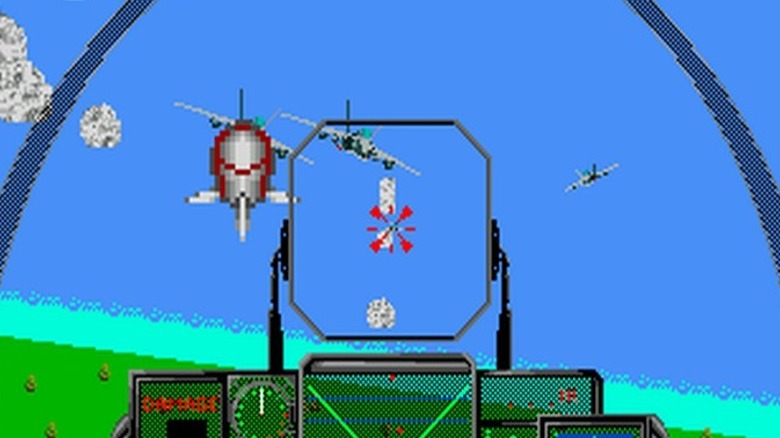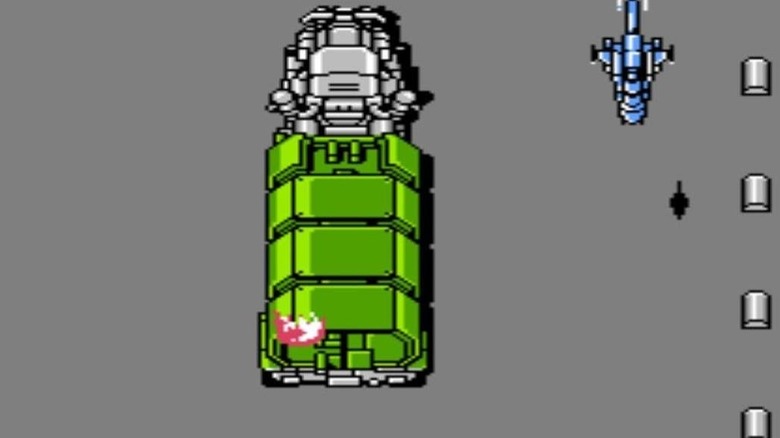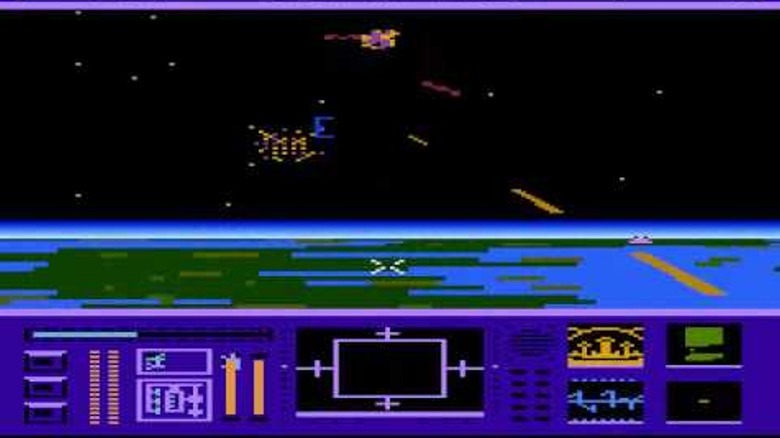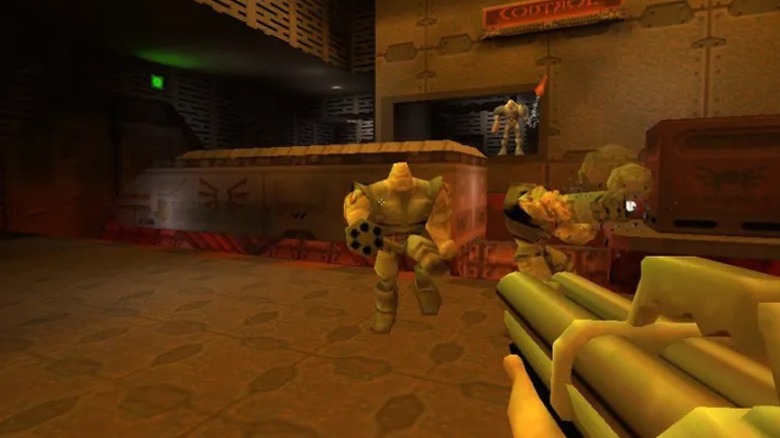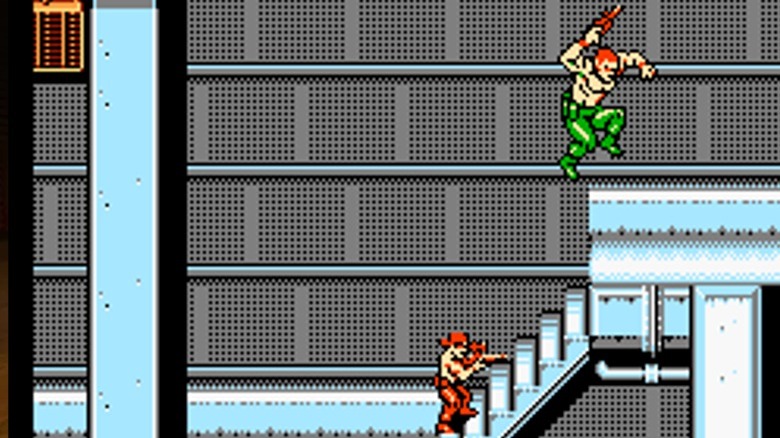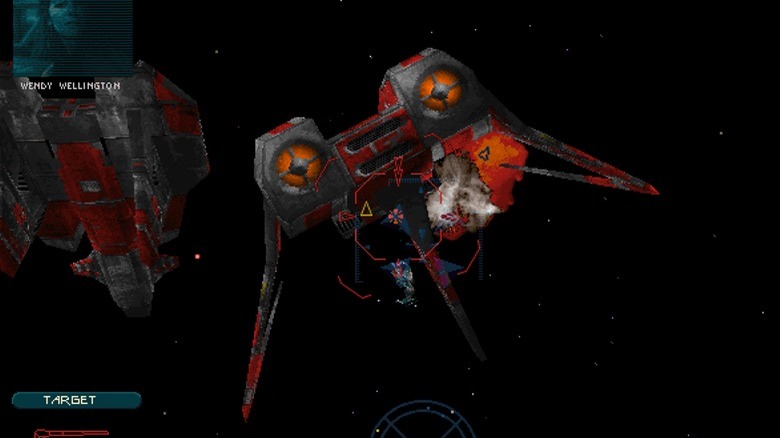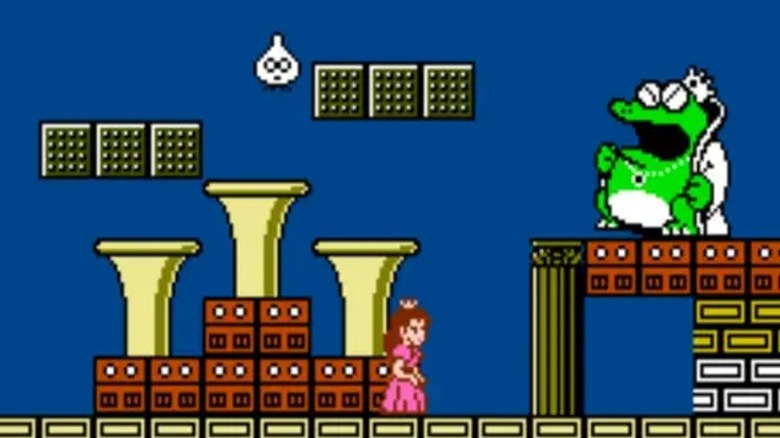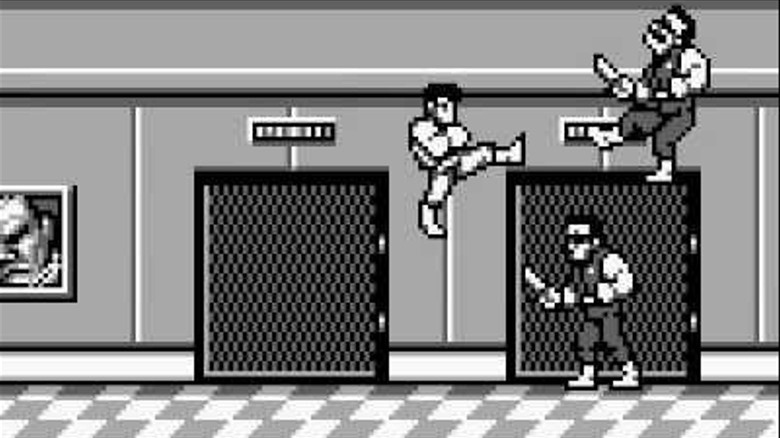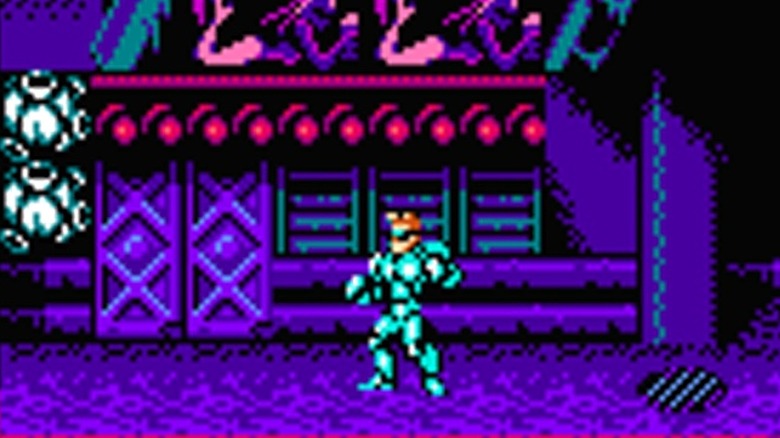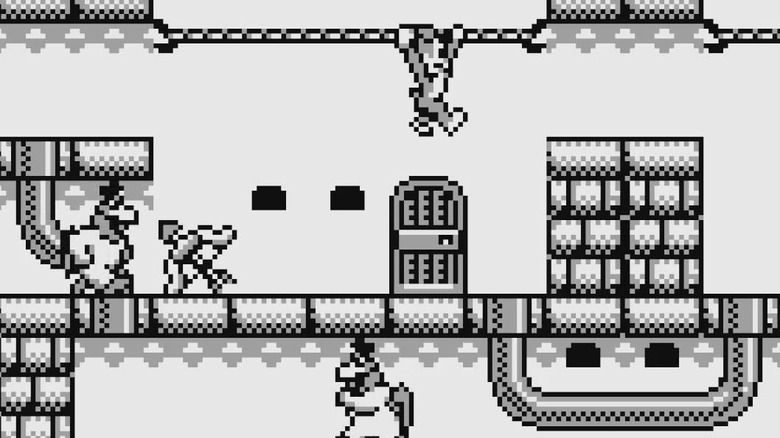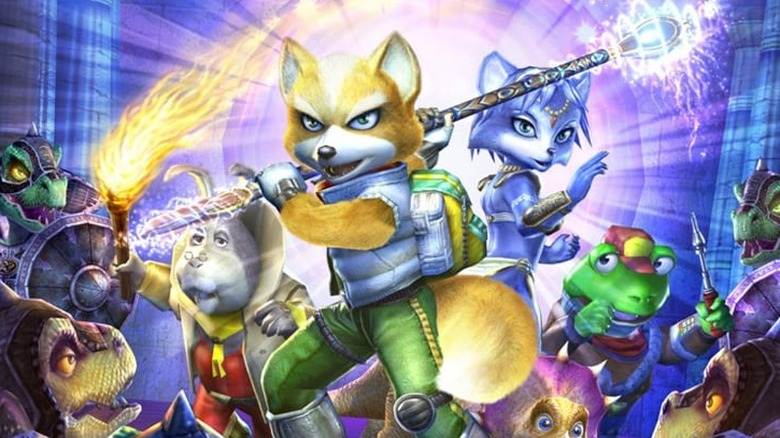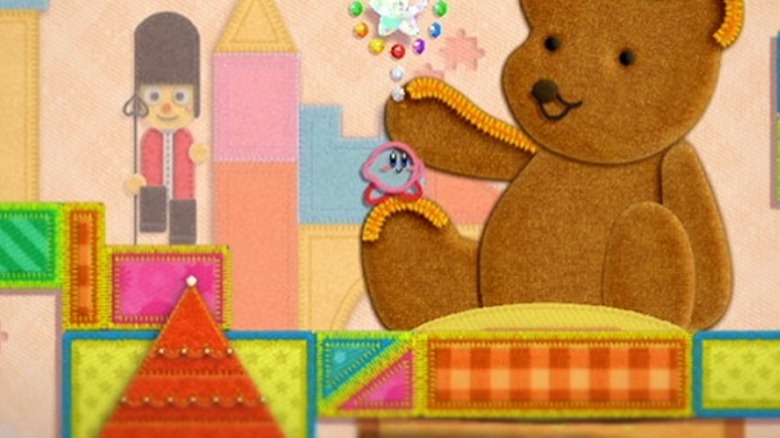Unrelated Games That Pretended To Be Sequels
A surprising number of video games have been released with titles suggesting they're part of a major franchise, only for fans to learn they have little to do with the rest of the series. Many gamers have seen this first-hand, firing up sequels in which the visuals, gameplay, and even characters are seemingly unrelated to what came before. This can be particularly frustrating when the so-called "sequel" isn't even the same genre.
Sometimes these games turn out this way when they're outsourced to another studio with a different skill set for developing games. Other times it's as simple as a retitle or re-skin during localization. The gaming industry has also saved doomed projects by recycling them into another proven franchise.
The practice isn't as common now as it once was, but there was a time when every gamer had a story about a sequel that didn't match the rest of their favorite series. That's why it's worth taking a look back at the games that tried to pass themselves off as sequels, and why they did it.
Afterburner 3
The "Afterburner" franchise dates back to 1987. The first and second games were both third-person rail shooters, fondly remembered for their (at the time) high-octane gameplay. The camera would stay directly behind the player's fighter jet as player launched missiles and avoided enemy fire. The first two games were developed by Studio 128 and were available on consoles, although they were particularly popular in arcades.
"Afterburner 3," on the other hand, was developed by Sega R&D 8. It was originally released in Japan as an arcade game called "Strike Fighter," but the name was changed to make it part of the "Afterburner" franchise when it was brought to North America. It wasn't just the name that was different, though.
Sure, players were still flying a fighter jet and shooting enemies, but now they were doing it from inside the cockpit, giving the game more of a flight-sim feel. The graphics were also noticeably downgraded to a static plane interior, while the muddy outside featured flat-colored ground speckled with square shrubbery. Honest Gamers said in its review, "So poor are these graphics that they severely hamper your ability to perform the game's singular, simplistic task: shooting." That's pretty harsh criticism, but it likely reflects the feelings of many "Afterburner" fans who were disappointed when the third game felt like a major step backward.
Super Spy Hunter
The first "Spy Hunter" game was developed by Bally Midway in 1983. It's a James Bond-inspired driving game in which the player takes on the role of a secret agent and pilots a vehicle and trades fire with enemies. It was sort of like a very early draft of "Twisted Metal," but with much a simpler design and none of the competitive elements. "Spy Hunter" was originally released as an arcade game and received a popular NES port in 1987. The first game was an undeniable hit, but sales flopped for the second, leaving the series inactive for a few years.
Then came "Super Spy Hunter." This game started out as a completely different racing shooter made by Famicom called "Battle Formula." It's still a top-down car-driving shooter in which the player moves forward on a vertically scrolling road, but the visuals are noticably brighter and more vibrant. Critics have praised the game for making a much more successful port to home consoles than the original "Spy Hunter," which was better played on arcade cabinets.
This seems to be one of the few instances where the false sequel was seen as more successful than the genuine one, so it's not always a bad thing.
Star Raiders 2
The first "Star Raiders" was an old-school Atari 400/800 game that came out all the way back in 1982. The game was so well-received that it was reportedly a driving force for many consumers in making the decision to buy the console. This popularity seems at least partially due to the success of the early entries in the "Star Wars" franchise, which incited sci-fi fever. It's probably no coincidence that enemy ships in "Star Raiders" looked so similar to Imperial fighters. It's not just the aesthetic that contributed to its popularity, though: "Star Raiders" was also one of the first space shooters that asked its players to think strategically about how they were going to take down enemies.
The development of "Star Raiders 2" had little to do with the first game. It began as a tie-in for the film "The Last Starfighter." Atari had acquired the rights to the film and, according to a report from a former employee, the studio was all but certain that it would be as popular as George Lucas' space saga. Not only did that not turn out to be the case, but Atari was forced to downsize as the company faced financial difficulties.
The studio decided to release the mostly completed game as "Star Raiders 2," rather than connect it to the unpopular film. Many of its connections to the movie are still evident in the final game, however.
Quake 2
Anyone who has ever played "Quake" and its sequel knows that they're very different from each other, in spite of the fact that both were developed by id Software. The first title in the series is a first-person shooter in which the player is sent through a portal by the government in order to stop an enemy codenamed "Quake." The second game is also a first-person sci-fi shooter, but the player takes on the role of a marine who's tasked with saving the Earth from an alien invasion.
That might not seem all that different on the surface, but there is no crossover in characters or lore between the two. There's a good reason these stories and characters are completely unconnected, though.
During development, "Quake 2" was nearly its own standalone property. Level designer Tim Will told PC Gamer that id Software had briefly developed it to be a completely new title, but the studio eventually realized that the gameplay simply retained that classic "Quake" flair. It also proved difficult to settle on a new IP name. Rather than calling it "Wor," the studio decided that making it the second entry in the "Quake" series was the better option, even if the dissonance between their stories might have confused fans.
Contra Force
The first game in the "Contra" series went by a few different names when it was localized, including "Probotractor" and "Gryzor." It was developed by Konami in 1987 and was quite popular in arcades for its cooperative shooting mechanics and vibrant backgrounds, and the NES port only increased its popularity. There have been over a dozen games in the "Contra" series to date, but one of these sequels was different from the others.
The fifth game in the franchise, "Contra Force," was only ever distributed in the U.S. It was an action shooter that was released by Konami, like the other "Contra" games, but it went by a different name during development. The game was originally supposed to be a brand new IP called "Arc Hound" and was set to be released in Japan. This didn't come to pass, though. For unknown reasons, "Arc Hound" was canceled and the project was repurposed for a western audience as part of the "Contra" franchise.
This ended up working out well for fans, though, as gamers have praised the music, visuals, boss battles, and platforming segments in "Contra Force." All's well that ends well, right?
Wing Commander Privateer 2: The Darkening
"Privateer 2: The Darkening" is the direct sequel to "Wing Commander Privateer" — sort of. They are both space-fairing flight sims that involve blasting enemy ships into debris, but that's about where the connections between the two end. For one thing, the visuals are completely different. The first game, which was developed by Origin Systems, featured a terminal where enemy combatants would taunt you or beg for mercy as the space battles ensued, while players would navigate their fighter through a narrow window in the HUD.
"Pioneer 2" was developed by a different studio, Electronic Arts Manchester. It took a major step up from its predecessor in the graphics department, but much to the displeasure of fans, it abandoned many of the combat mechanics that worked in the first game. Gamers also complained that it heavily streamlined the open design of the first game's world. Oh, and the game featured basically zero lore connections to previous "Wing Commander" entries.
A review from GameSpot stated, "'Privateer 2' is touted as a 'Wing Commander' game, but no obvious connection exists. What we have instead of a true sequel is an aesthetically pleasing space flight sim seasoned with high budget full motion video and garnished with more bugs and glitches than this reviewer has ever seen in a product boasting Origin's seal of approval." The reviewer did note that the space-flight engine and lighting effects were exceptional, however.
Super Mario Bros. 2
Even the biggest franchises ever aren't safe from this phenomenon. In North America, the second entry in the "Super Mario Bros." franchise also started out as a completely different game. It was originally released in Japan as "Yume Kōjō: Doki Doki Panic," which translates to "Dream Factory: Heart-Pounding Panic." Those who played "Doki Doki Panic" could control a family of four characters — Papa, Mama, Imajin, and Lina — as they sought to navigate a mysterious dream world called Muu.
"Doki Doki Panic" was developed by Nintendo and published collaboratively between Nintendo and the Fuji Television Network. It was designed to promote a televised event called "Yume Kōjō '87" (translated as Dream Factory '87), which was supposed to introduce several new media properties that the studio would be releasing over the following years.
There wasn't much point in promoting a Japanese event to Western audiences, however. Also, Japan's own "Super Mario Bros. 2" was deemed to be too difficult for North American audiences, and so Nintendo swapped out these playable characters with characters from the "Mario" franchise and renamed the game. Because of this, the sequel is very different from the original "Super Mario Bros." For example, players pick clumps of grass to gather vegetable-based items to throw at enemies. These changes have led some gaming purists to question whether "Super Mario Bros. 2" even counts as a true "Mario" game.
Double Dragon 2 (Game Boy)
The "Double Dragon" franchise started out as a series of side-scrolling arcade beat 'em ups in which players could cooperatively fight their way through hordes of hooligans. The first game, made by Technōs Japan in 1987, introduced several ideas that would become staples of the genre, such as the ability to pick up and use enemy weapons. "Double Dragon 2: The Revenge," also from Technōs Japan, followed in 1988 and built upon the successes of the first installment.
There was another version of "Double Dragon 2" that was released for the Game Boy in 1990, however. This version of the game has nothing to do with either of the original "Double Dragon" games. That's because it's actually a localization of one of Technōs Japan's other titles, "Nekketsu Kōha Kunio-kun: Bangai Rantō Hen," which translates to "Hot Blooded Tough Guy Kunio: The Further Brawls."
The "Nekketsu Kōha Kunio-kun" series was one of Technōs Japan's earlier side-scrolling franchises. As such, it featured a simpler combat system that translated well to the handheld, but lost a lot of the complexity found in the "Double Dragon" arcade and console games. Still, many consider the first "Double Dragon" to be a spiritual successor to "Nekketsu Kōha Kunio-kun," so their connection might not be as dubious as it initially appears.
Street Fighter 2010: The Final Fight
Anyone with a passing interest in fighting games probably knows about the "Street Fighter" series. It's dominated arcades for years and new titles in the franchise continue to impress critics and rank among Capcom's best-selling properties. "Street Fighter 2010: The Final Fight" isn't like the rest of the series, though. Released in 1990, the date in the game's title is actually a reference to the fact that it's set in the distant future of 2010, where players control a cybernetically enhanced super soldier as he defends Earth from aliens and mutants.
Nothing in the Japanese version of the game had anything to do with the "Street Fighter" franchise other than the title, but Capcom made several changes in the English localization to try and draw some connection between "Street Fighter 2010" and its namesake. Most notably, the studio changed the protagonist's name from Kevin to Ken, implying that it stars the blond martial artist who'd been a staple in the earlier "Street Fighter" games. This didn't end up making much sense, as the two character's backstories are entirely unrelated.
The art style and gameplay are also completely different from the mainline series. "Street Fighter 2010" is a platforming action game that has more in common with "Mega Man" than anything from the "Street Fighter" series.
Bugs Bunny: Crazy Castle 2
This one is a little more obscure than some of the others mentioned so far, but it's also one of the stranger examples of an adopted sequel, as it literally hopped franchises. "Bugs Bunny: Crazy Castle 2" was the second game in a Nintendo-licensed Game Boy series featuring the Looney Tunes' most infamous cartoon rabbit. Only it didn't start out that way — it originally starred a Disney character.
It was first released in Japan as "Mickey Mouse 2." In the game, Minnie gets kidnapped by a villain named the Horned King and Mickey has to embark on a journey to save her. It's an action puzzle game that involves navigating dungeons full of traps and enemies, and seems to have been well-liked by those who played it. For some reason, however, it later had all of its assets swapped to Looney Tunes variants for its release in America, where it was marketed as a "Bugs Bunny" sequel.
The strangest part? "Crazy Castle 2" was later released in Europe as the territory's first "Micky Mouse" Game Boy game. Then, the American "Crazy Castle 2" version was translated back into Japanese to be the centerpiece of the "Bugs Bunny Collection" for Game Boy and Super Nintendo. That's a pretty wild ride, especially for two of the most heavily trademarked cartoon characters in the world.
Star Fox Adventures
This is an odd one, since it's essentially half of an unrelated game. Fans of the "Star Fox" games know that the series consists of sci-fi-themed rail shooters — usually. The protagonist, Fox McCloud, is an ace pilot who will gun down enemy ships, dexterously navigate debris fields, and do a barrel roll to dodge enemy fire. The franchise has long been considered a staple of Nintendo's line-up, with Fox even serving as a recurring playable character in the "Super Smash Bros." games.
"Star Fox Adventures," on the other hand, is an action-adventure title in which Fox spends the entire game exploring a strange planet on the edge of the Lylat System on foot. This is because "Adventures" was yet another title that started out as something else entirely.
Most of the game's architecture was developed by Rare to be a standalone title called "Dinosaur Planet." It was almost complete when Nintendo's Shigeru Miyamoto reportedly noticed that many of the character designs were remarkably similar to the characters from "Star Fox."
According to an interview with Nintendo developer Takaya Imamura, his team had also been working on a separate "Star Fox" game for the N64 near the end of the console's life cycle. "Miyamoto as producer made the call to move both games to the Gamecube and suggested that we take the best elements from each project and combine them into a single game," he said. And so, Rare and Nintendo ended up collaborating to make "Star Fox Adventure" into a launch title for the Game Cube.
Kirby's Epic Yarn
2D sidescrolling platformer "Kirby's Epic Yarn" was primarily developed by Good-Feel. The project was originally conceived as a standalone title about a sentient piece of yarn named Fluff who explores a fabric-based world. "Fluff's Epic Yarn" was approved by Nintendo and Good-Feel managed to produce a prototype of the game, but Software Planning's Nobuo Matsumiya reportedly found the game to be overly simple and lacking in difficulty. It was later decided that the game would be added to the "Kirby" franchise in order to give it brand recognition and the resources necessary to complete the game.
The result was a game that was well received, but is very different from other games in the "Kirby" franchise. Not only is the setting craft-based, but Kirby's controls and abilities are different from the ones he has in most of the other games as well. The pink hero uses a yarn whip as his primary mode of attack and doesn't have his trademark ability to inhale enemies, nor can he float around. In fact, he shares the same abilities as Fluff, who remained in the game but was shifted to the role of secondary protagonist.

